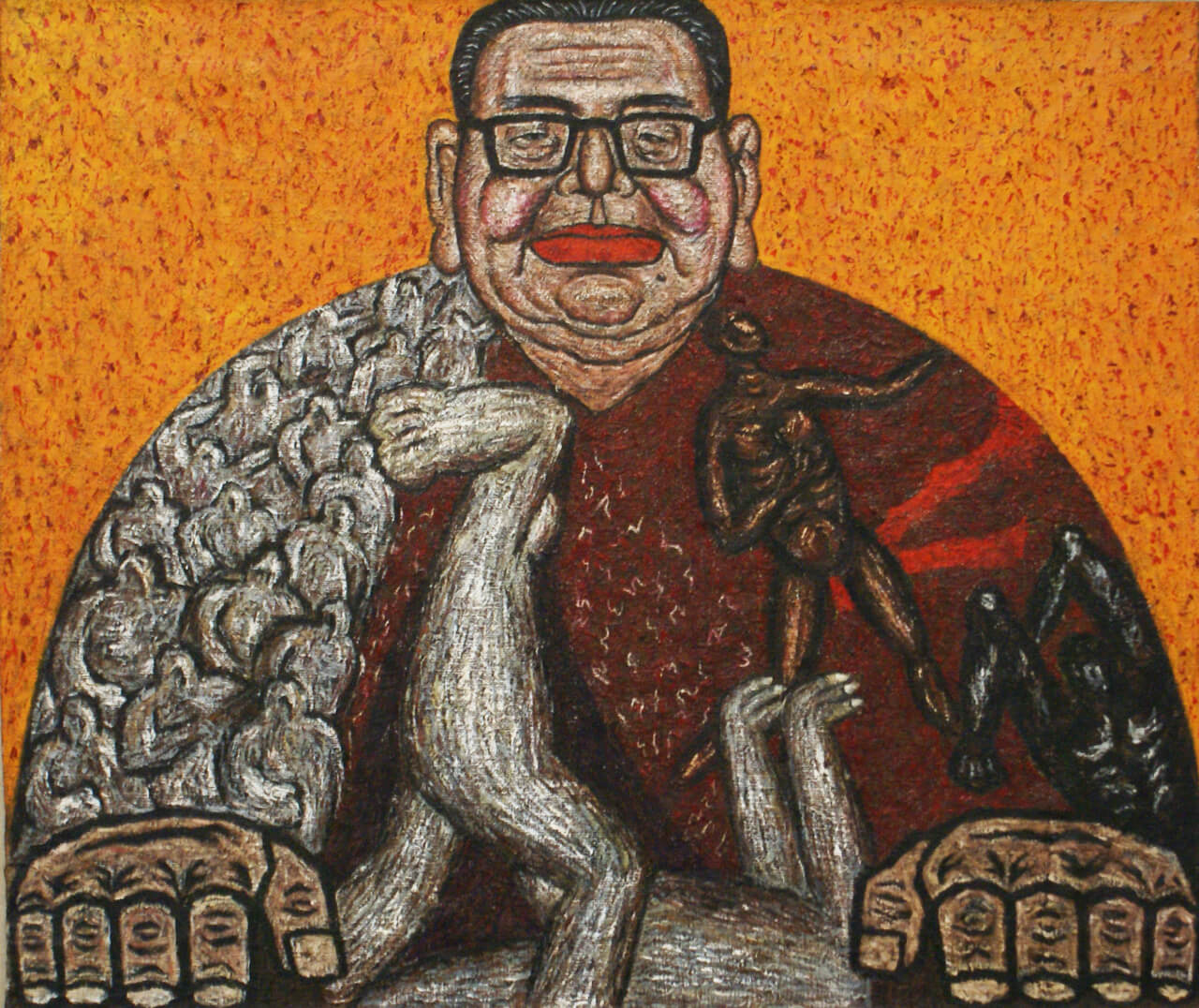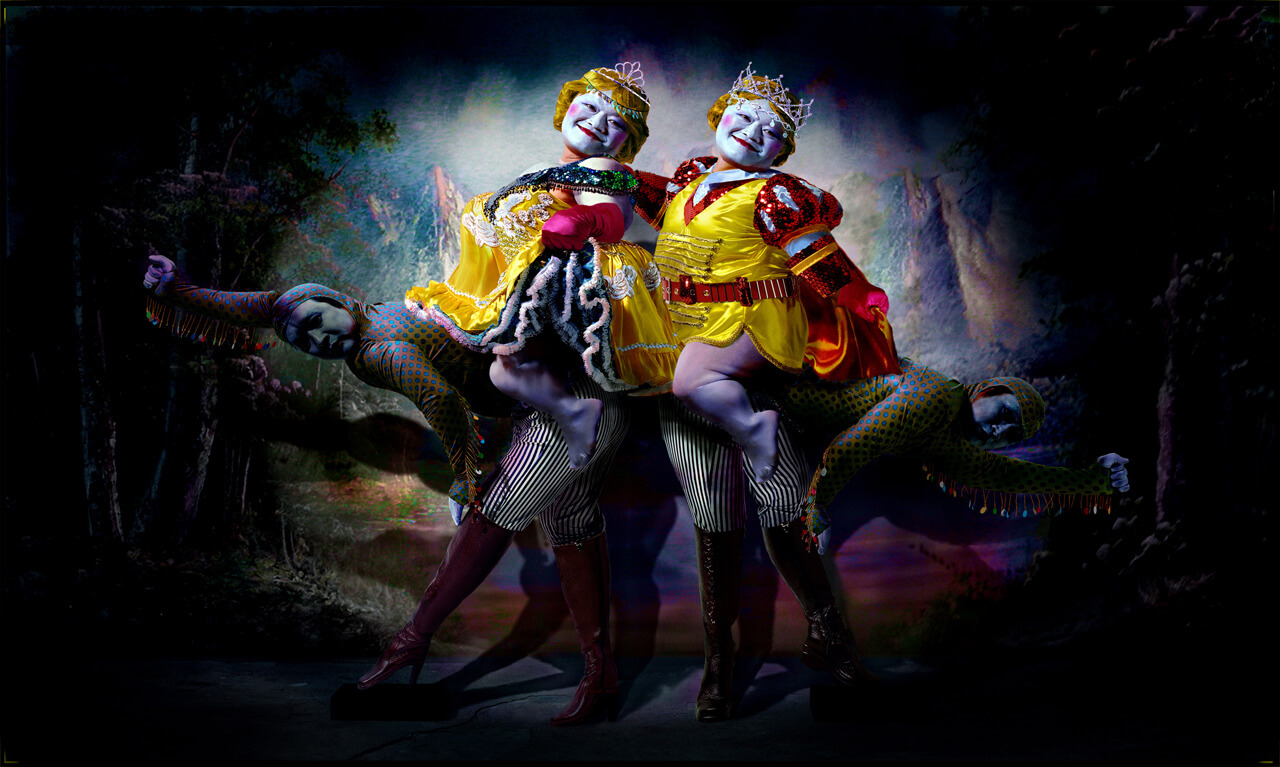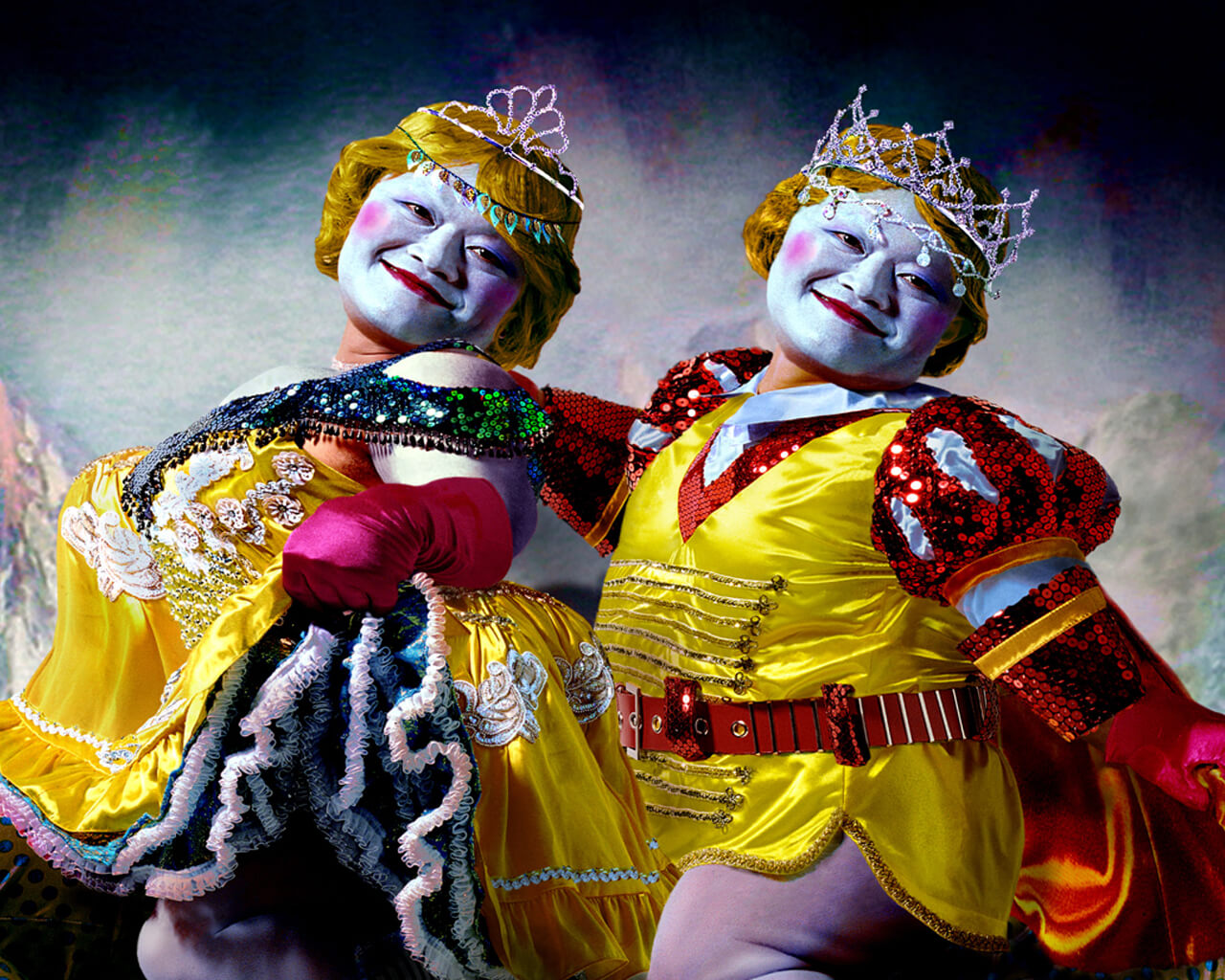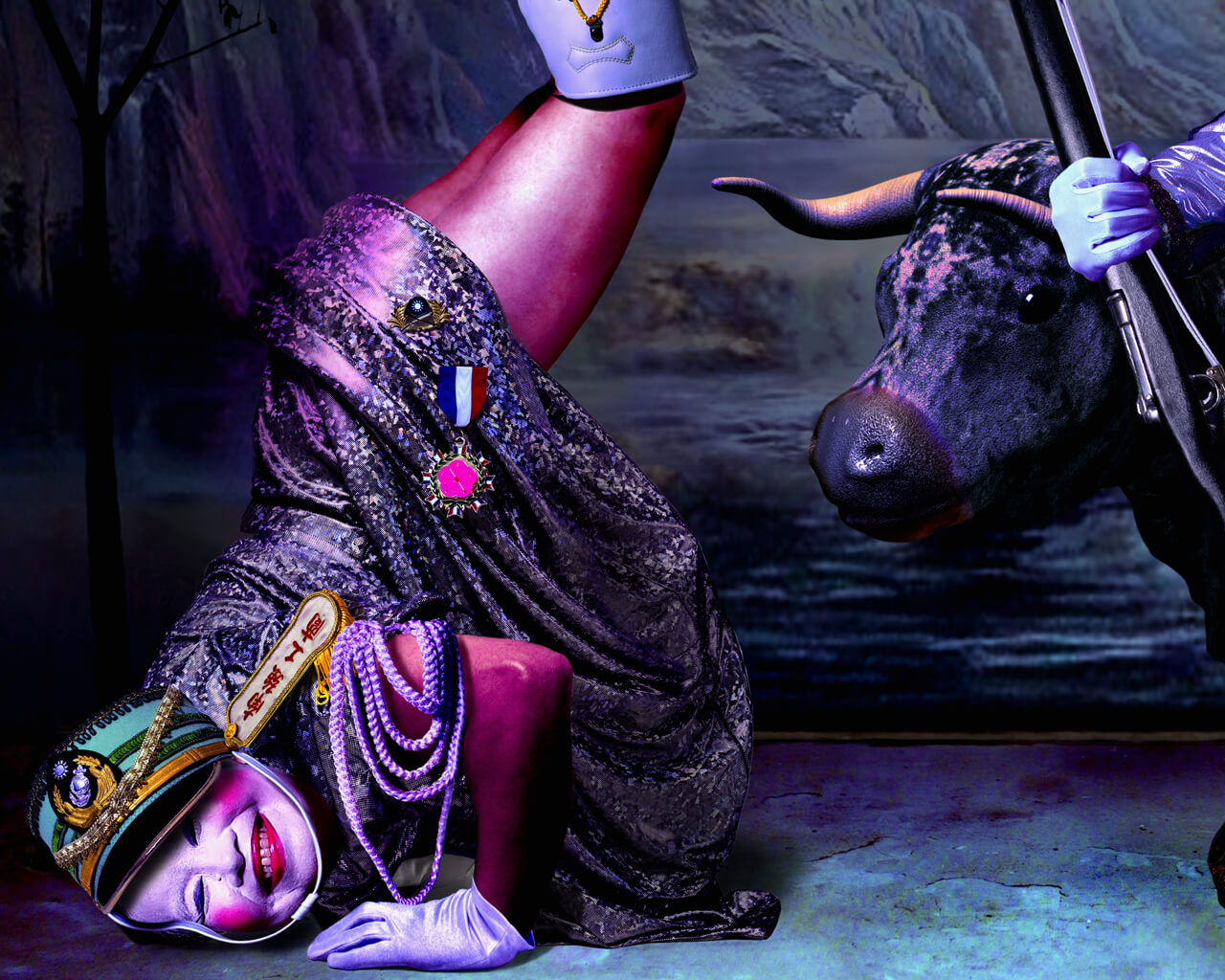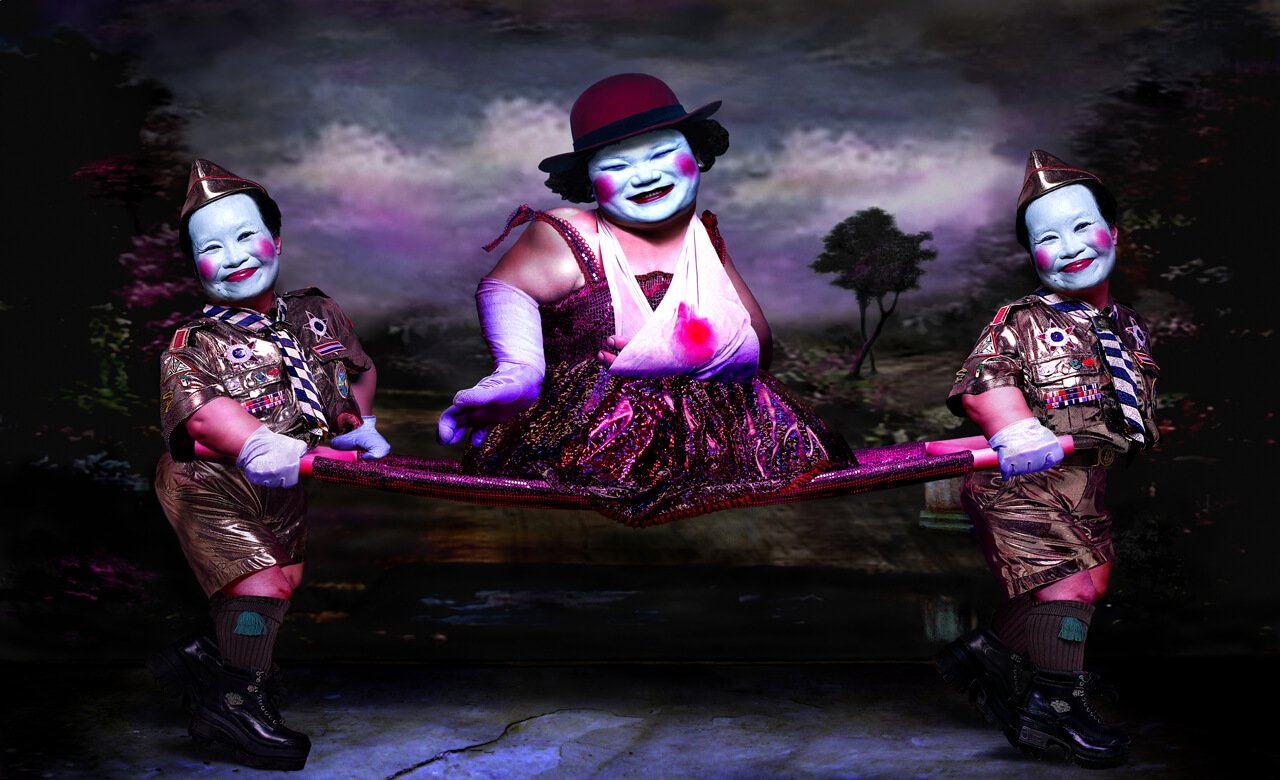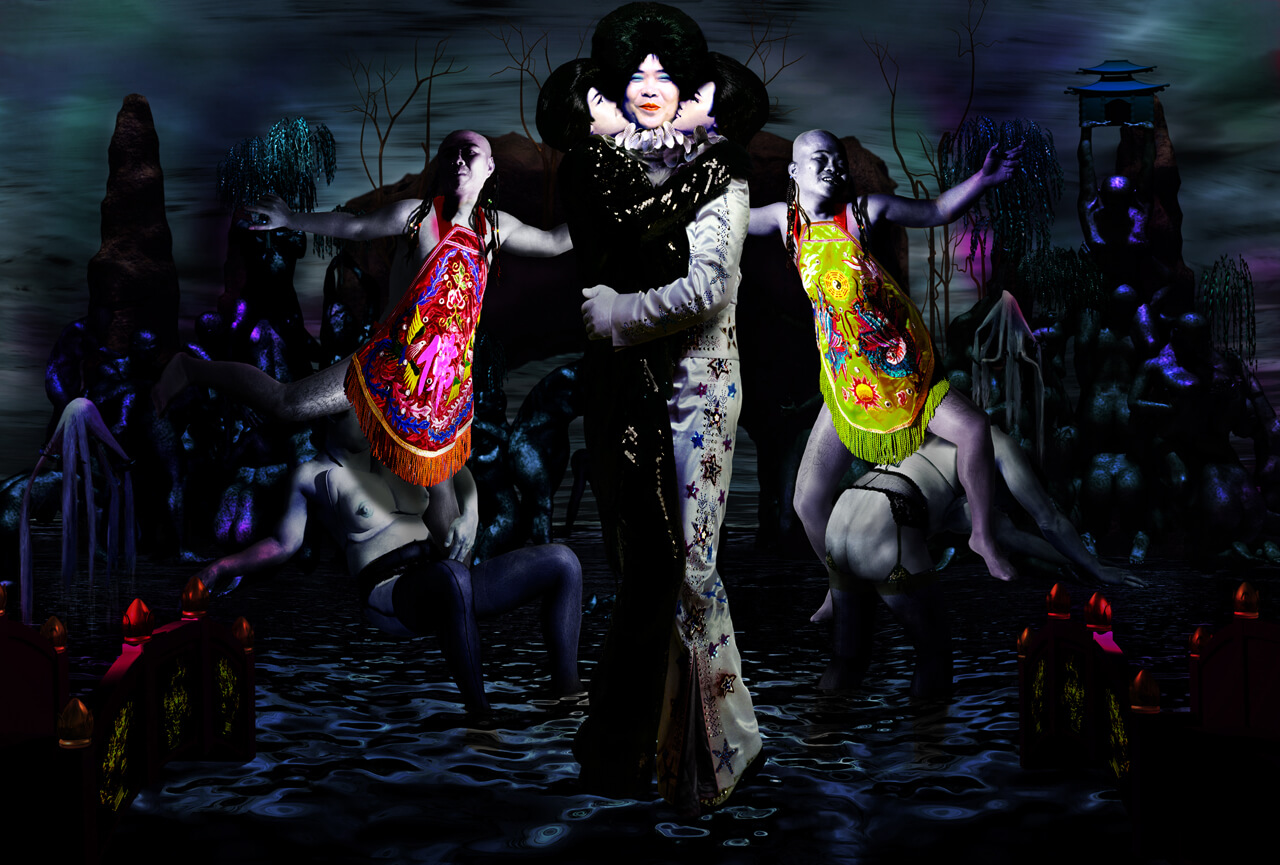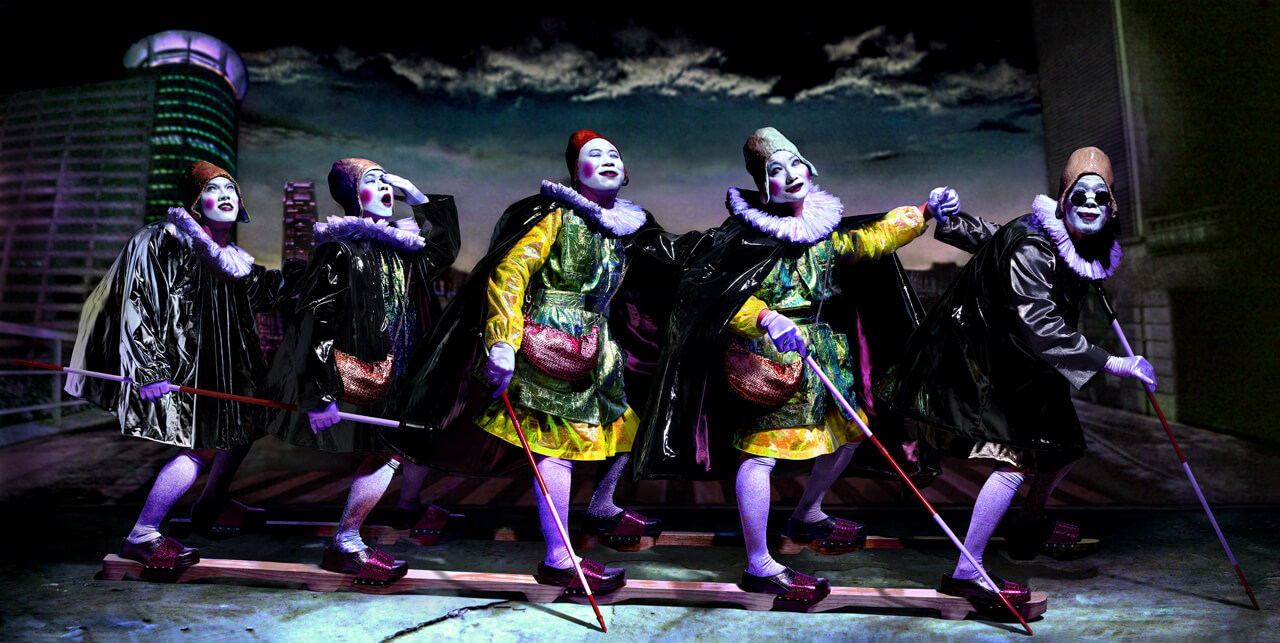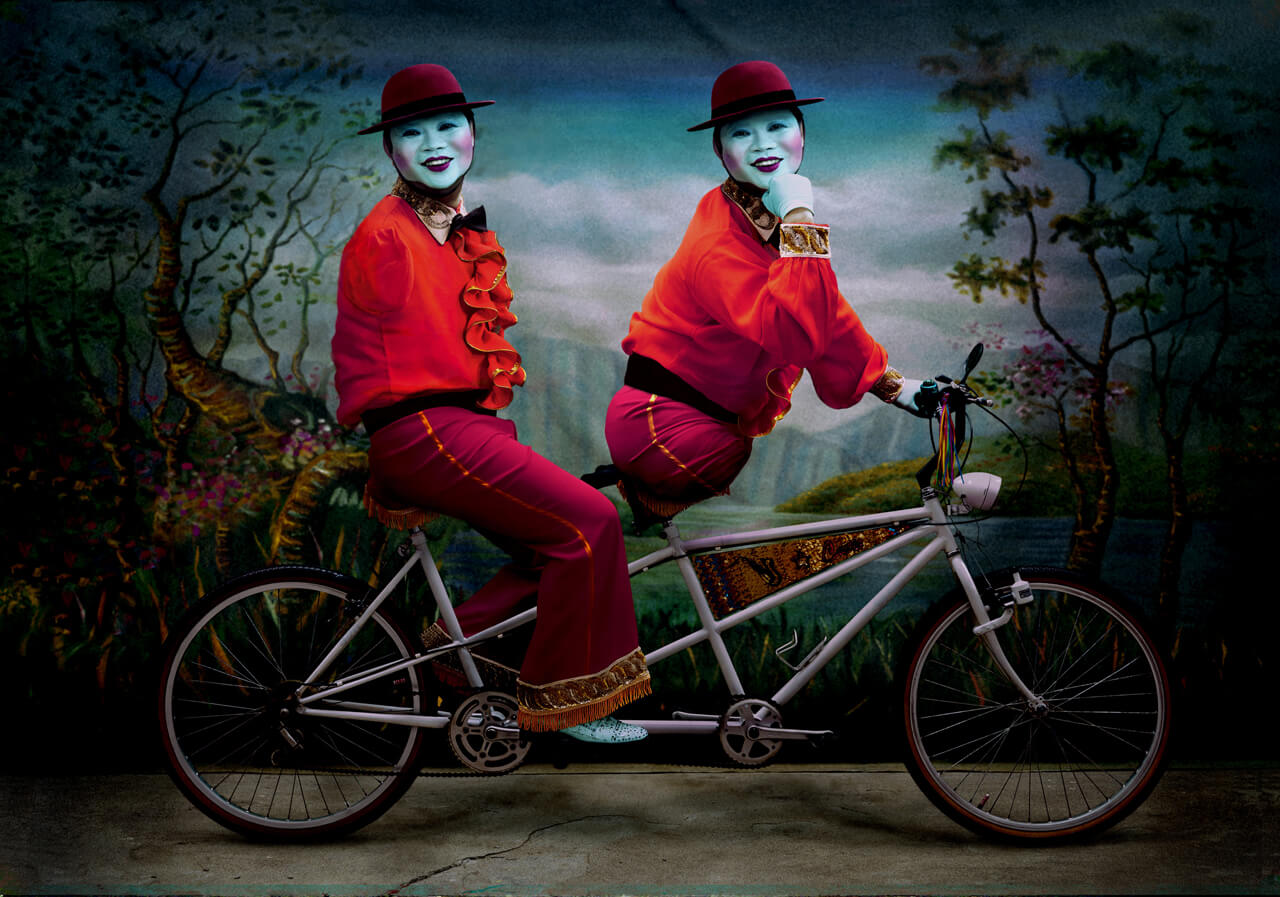01
About Wu Tien-Chang 關於吳天章
About Wu Tien-Chang 關於吳天章
⌈I don’t care if people consider me tacky. I’m simply obsessive about physical or material things over and over again. I like the smells of wharfs. I’m emotionally charged when I see the curves of the embankment. I feel deep attachment to vintage people and items.I know that most people would say that all this is nothing but an illusion. As the Diamond Sutra says, all the emotions and sufferings in this life, as well as all the objects and forms that you can see with your eyes, are illusions and different states of consciousness. However, it’s unacceptable to me.I just long for these things that I can touch with my hands and see with my eyes.|Wu Tien-Chang⌋ |
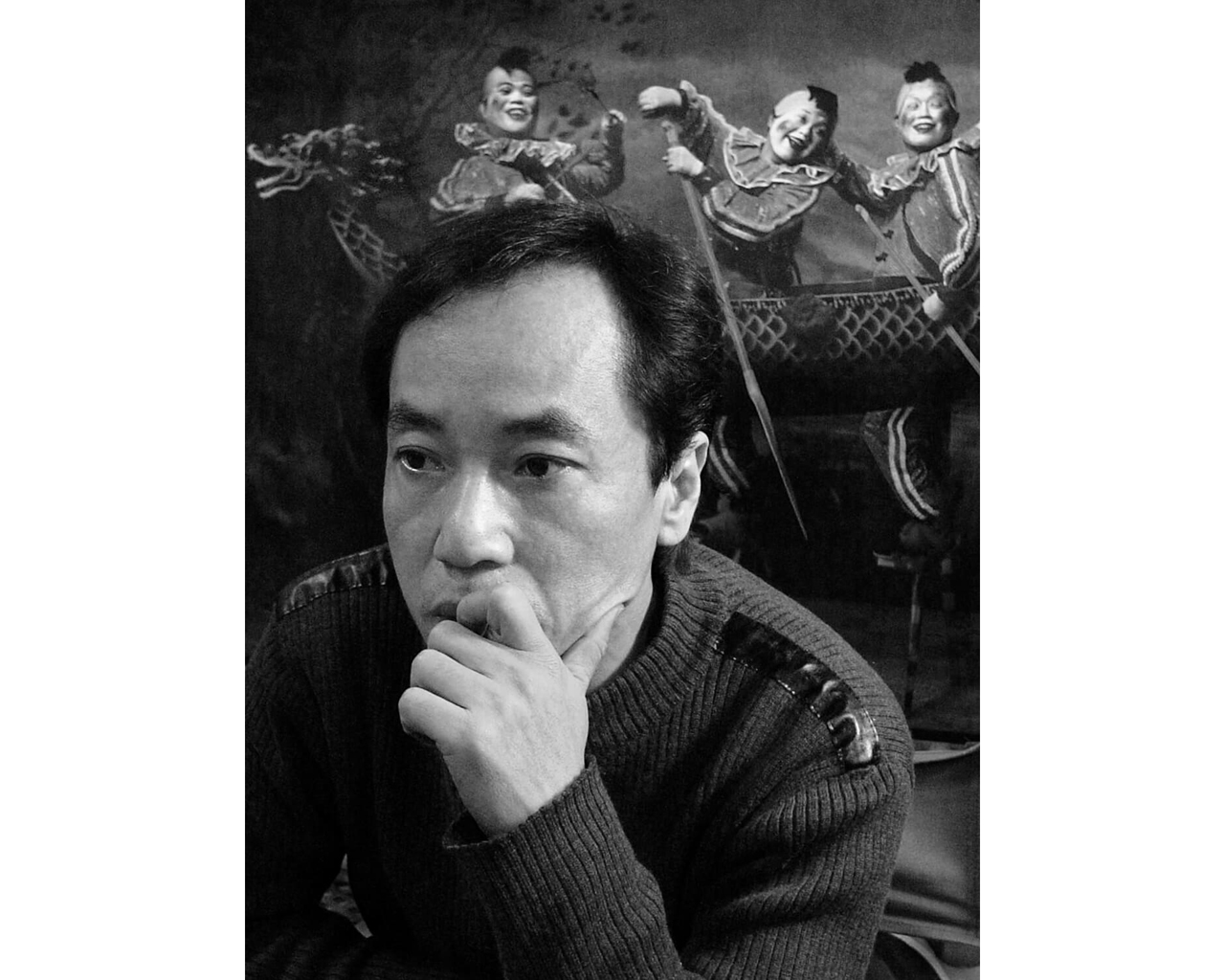
|Artist Wu Tien-Chang(1956-) in front of his work |Wu Tien-Chang, We're All in the Same Boat, 2002, 120x205.4cm / 240x410.9cm, Laser print
Following his birth in Lugang(鹿港), Changhua County in 1956, Wu Tien-Chang moved to Keelung with his family and graduated from the Department of Fine Arts, Chinese Culture University in 1980. The craze for abstract expression swept Taiwanese art scene in the 1960s. Abstract painting remained part of the influential mainstream until the 1980s. Wu nonetheless was utterly determined to engage in pure visual arts and chose to portray Taiwan where he came of age in depth.
⌈I want to engage in no other thing than pure visual arts.I will definitely carve out a niche of my own. I want to fight like a rebel. Take the rebellion led by outlaw heroes Chen Sheng and Wu Guang for example. I can do it like them as well. At the time when abstract art was the mainstream, didn’t we manage to make a way out of it?Anyway, I don’t think I have the literacy in that regard. I’m absolutely diffident about conceptual art. It at most proves that I’m not talented. But I have passion for the field I chose, in which my competence shows itself. I really can’t quit.
|Wu Tien-Chang⌋ |
In the 1980s, Wu actively responded to sensitive political issues. He published the “Injury Series” and the “Four Eras Series” around the lifting of martial law. The former investigates the trauma inflicted by the authoritarian regime, whilst the latter intuitively criticizes the regime’s leaders. In the 1990s, Wu paid extra attention to socio-cultural issues, searching for the more subtle and ambiguous collective memories and scars shared among Taiwanese people. He also evolved his best-known “phony” mannerism in this period. From 2000 onwards, Wu began to draw inspiration from Taiwanese folk beliefs and classical literature, and construct the plots of his works from the perspective of human nature. He created a bittersweet tragicomic atmosphere with gorgeous, joyful casts and sets in the midst of profound sorrow and predestination taken as given.
|
⌈Wu Tien-Chang’s oeuvre is intricately woven with politics. It involves not so much any historical or political events as the accumulation of all the entangled elements in the entire distorted, deformed and even corrupt spatial field of his time. These elements even permeate his flesh and blood, nerves, exaggerated expressions, weird smiles, and enigmatic dreams, until all of them become a viscous entity within which nothing is distinguishable.
|Huang Hai-Ming, Director, Taipei Fine Arts Museum (2012-2015)⌋ |
